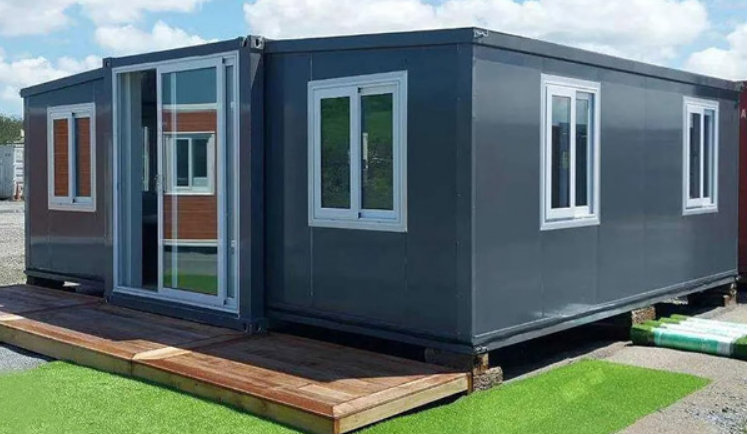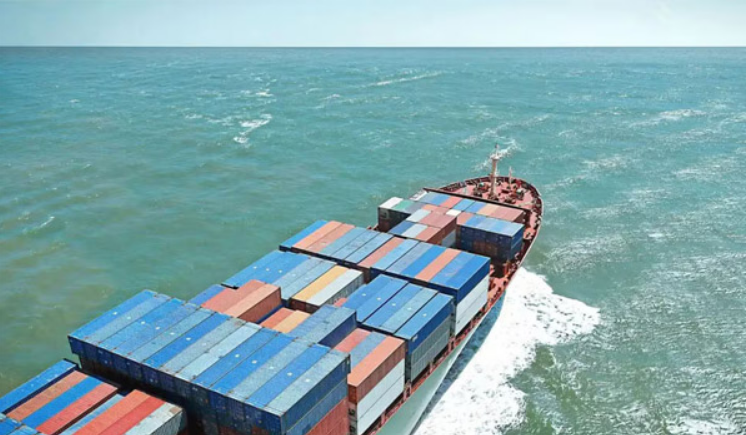Shipping a portable home overseas can be costly, but with the right steps. You can save big. From smart packing to sharing space and avoiding surprise fees, these tips will help you cut costs. This guide outlines five simple ways to make your shipping more affordable and easier.

1) Pack It Flat and Fill Every Cubic Foot
Shipping a portable home overseas can be expensive, but one of the easiest ways to cut costs is by packing it flat and using every bit of space wisely.
i) Ship the House as a Flat Pack or Folded Shell
To save big on overseas shipping, it is best to send your portable house as flat packs or a folded shell rather than fully builts. A completed house takes up more space, so you will need more containers, which increases costs.
Example: A company in Australia shipped 10 fully built cabins to New Zealand and had to use 10 containers. Later, by folding the same model into flat packs, they fit all 10 units into just 3 containers, saving over $15,000 in freight charges.

ii) Use Load‑Planning Software for Better Packing
Moreover, using load-planning software makes it easy to arrange your home parts in a tight and organized way. These tools show you how to place walls, floors, and fixtures inside the container without wasting space.
Example: A prefab builder in Germany used 3D load-planning software to pack modular kitchen designs and bathroom units. By virtually planning the layout, they reduced the container count from 4 to 2, cutting their logistics cost in half.
iii) Avoid Paying for Air
In international shipping, space costs money. If your container is not packed properly, you are paying for air literally. That’s why it is important to stack parts tightly and avoid large gaps between items.
Example: An American startup paid for a 40-foot container to ship a tiny house structure, but only used 60% of the space. After reviewing their method, they packed smarter and included two extra bathroom pods in the same container, doubling their shipment at no extra cost.
iv) Fit More, Save More
If you pack everything properly, you can fit more into each container. This helps you use fewer containers. When you use fewer containers, your shipping cost goes down. You also spend less on customs and port fees. It can even make your delivery faster.
Example: A builder in China changed the size of their foldable homes just a little so they could fit 12 homes in one 40-foot container instead of only 6. This small change helped them save thousands of dollars on every shipment.
2) Consolidate or Share Containers
Shipping your portable home can be much cheaper if you share space with others. Instead of paying for a whole container alone, you can team up with other exporters who are sending items to the same destination.
i) Combine Your Shipment with Others
If you don’t have enough items to fill a container, you don’t need to waste money. You can combine your shipment with others going to the same port. This is called LCL-to-FCL conversions, which means turning several small shipments (LCL) into one full container (FCL). This helps lower your cost per item.
Example: A tiny home company in the UK was sending two small units to Dubai. On their own, they couldn’t fill a container. But by joining with another exporter sending building supplies to the same port, they shared one container and saved over 40% in freight charges.
ii) Use Freight Co-Ops or Space-Share Platforms
You can also find help online. There are freight co-ops and space-sharing websites that connect shippers. These platforms let you split container space with other businesses or builders, making it much more affordable.
Example: A startup in the U.S. used an online freight-sharing service to ship modular walls to South Africa. By splitting space with a furniture exporter, they avoided paying for unused room and cut their shipping bill nearly in half.
3) Ship Off‑Peak and Stay Flexible on Transit Time
Shipping costs can change a lot depending on the time of year and how fast you need your items. To save money, it is smart to ship during quiet seasons and be open to slower delivery options.

i) Avoid Expensive Seasons
First of all, try to avoid shipping during busy times like holidays or harvest seasons. During these months, many companies are sending goods, so ocean freight prices go up.
Instead, try to ship in off-peak months such as February, March, or September, when demand is low and prices are better. Additionally, mid-week departures, particularly on Tuesdays or Wednesdays, are often more affordable than weekend shipments.
Example: A prefab homes company in Australia planned to ship in December, but they delayed until February. As a result, they avoided the holiday rush and saved over $5,000 in shipping costs.
ii) Be Flexible with Delivery Time
In addition, being flexible about how fast your shipment arrives can help lower costs even more. If possible, choose slower ships or routes that stop at more ports.
These indirect routings often come with lower base rates. Even though delivery might take a bit longer, the savings can be worth it.
Example: A U.S. company chose a slower ocean route that took 3 weeks instead of 2. Because of that, they got a 20% discount on their shipping bill.
4) Negotiate the Right Incoterms and All‑In Freight Quotes
Shipping costs don’t just depend on distance. They also depend on who is responsible for what during the journey. To avoid surprise charges, you should choose the right shipping terms and ask for clear pricing upfront.

i) Choose the Right Incoterms (FOB vs CIF)
First of all, it is important to understand Incoterms, which are international shipping rules that explain who pays for what. If you choose FOB, you will pay for the shipping and insurance after the seller loads the items onto the ship.
On the other hand, CIF (Cost, Insurance, Freight) means the seller handles the shipping and insurance costs until the goods reach your port. Depending on your needs, picking the right term can help you stay in control of the cost and avoid hidden fees later.
Example: A portable home buyer in Kenya chose CIF from a supplier in China. But later, they learned the seller added extra handling fees. Next time, they switched to FOB and arranged shipping themselves, saving over $2,000.
ii) Ask for All-In or No-Surprise Quotes
In addition, always ask your freight forwarder or seller for an all-in quote. This means the price includes everything, like port charges, paperwork, handling fees, and fuel surcharges.
Otherwise, you might face unexpected costs such as THC (Terminal Handling Charges), bunker fuel fees, or extra documentation fees. To protect your budget, make sure everything is clear in writing before you confirm the deal.
Example: A startup in the U.S. didn’t ask for a full quote and was later charged $800 extra for paperwork and port fees. After learning from that, they started asking for no-surprise quotes, and never had hidden fees again.
5) Avoid Hidden Fees: Demurrage, Detention, and Storage
Even if you plan everything right, you can still lose money to surprise charges if your container stays too long at the port. To avoid this, move quickly and make sure all your paperwork is ready.

i) Use Local Transload Services to Return Containers Fast
First, when your container arrives, it needs to be emptied and returned quickly. If you take too long. You may have to pay daily fees called demurrage or detention.
To avoid these fees, book a local transload service. They will unload the container fast and return it to the shipping line on time.
Example: A builder in South Africa used a local warehouse to empty the container within one day. As a result, they avoided over $500 in late return charges.
ii) Pre-Clear Customs to Prevent Delays
Next, make sure your customs paperwork is ready before the container arrives. If your documents are not approved. Your container can sit at the port unclaimed, and you may have to pay storage fees every day.
By clearing paperwork in advance, you can get your shipment released faster and avoid those extra costs.
Example: A company shipping a modular home to Malaysia forgot to send their invoice and packing list early. Their container sat at the port for 6 days, and they had to pay over $1,200 in storage and demurrage.
Conclusion
In conclusion, shipping a portable home overseas doesn’t have to drain your budget. By planning, choosing the right shipping method, and avoiding hidden fees, you can save thousands.
Moreover, sharing container space and shipping during off-peak times makes a big difference. Most importantly, always stay organized and flexible. With these smart strategies, your international shipping can be both cost-effective and hassle-free.


